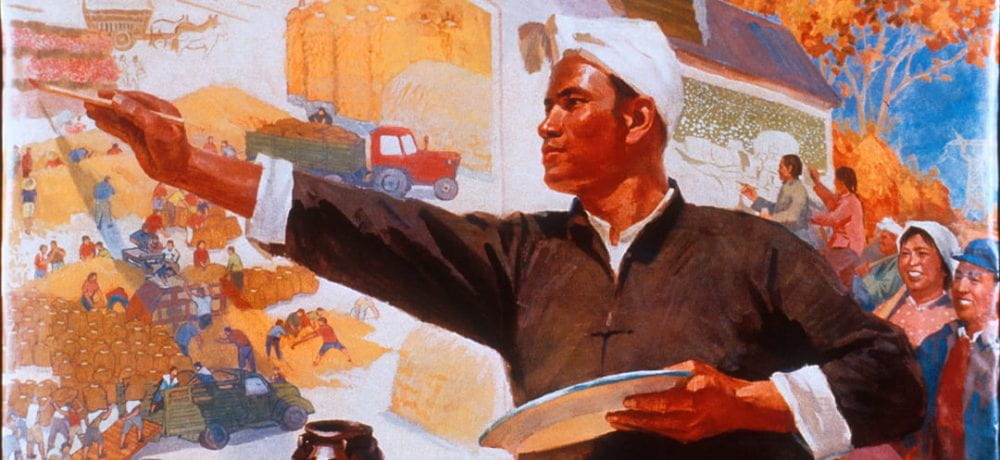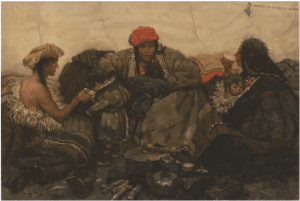I decided to focus on the Chinese artist Chen Danqing. Chen was born in August of 1953 in Shanghai, China, four years after the Communist victory over the Nationalists in October of 1949. His life story is one of both joy yet sadness, as his family was separated due to his grandfather’s allegiance to the Nationalist cause and his ensuing escape to Taiwan. Chen grew up in the metropolis of Shanghai, yet at the age of 17, he was sent to the countryside as a result of the Cultural Revolution’s effort to subject privileged city youth to the toil of the rural peasants. This experience is often noted as a turning point in his life. Following the closure of the Cultural Revolution in 1976, Chen attended the China Central Academy of Fine Arts where he cultivated his passion for the Tibet Autonomous Region and the culture and arts which existed in the faraway western region.
After graduating, he moved to New York City where he helped develop the fledgling Native Soil Painting movement in the United States through his work on the Tibetan people. He was strongly influenced by the works of Jean Francois Millet, a French realist who motivated Chen’s persistent work on Tibet. While his time in the United States was quite important to his development as an artist, he describes his time there as depressing and difficult. Before long, he returned to China and taught what he had learned in the West as a supervisor at Tsinghua University’s Academy of Arts and Design. Thus began Chen’s robust opposition to the Chinese art education institution, criticizing English proficiency as a prerequisite to graduation. He then left his position in an act of protest and gained national notoriety for his efforts. Having lived through the rigidity of late-Mao China, the gradual liberalization of the Deng era, and the seemingly paradoxical era of Jiang and Hu in the late 20th and early 21st century, Chen has experienced the PRC at its moments of unrestrained liberalization and state-sponsored surveillance and suppression.
In the words of one of his students, “Chen has never been just a painter. He is an intellectual with a social conscience” (Xu 2010). He remains working in Beijing today as a private artist and an avid writer on society, politics, and of course, art.
This piece of artwork, Mother and Child, depicts a Tibetan family in traditional garb and in a traditional Tibetan home that resembles the climate on the Plateau quite accurately. While the painting does not reference the turbulent relations between Beijing and Lhasa, there are clear distinctions drawn between the majority Han culture and the unique Tibetan culture which Chen so passionately pursues in his artwork.
Chen Danqing – Mother and Child. Oil on Paper. 1980.
Source: artnet.com (http://www.artnet.com/artists/chen-danqing/mother-and-child-a-ISkzD2GC9-G5FMOnyofIZQ2)
Works Cited
“Chen Danqing.” artnet. Accessed April 9, 2020. http://www.artnet.com/artists/chen-danqing/
Kaitlin, Solimine. “Tibet in the Artistic Imagination: An Interview with Chen Danqing.” The World of Chinese 2, no. 6 (2012): 28-33
Jun, X. “Sit on the Sidelines of” Chen Danqing’s Anger.” Art and Design 2 (2010): 57.


